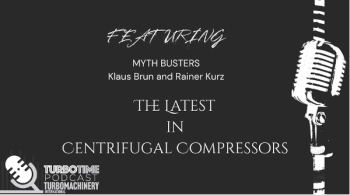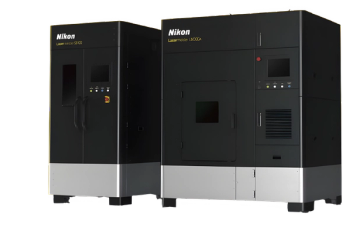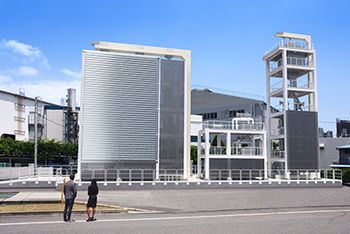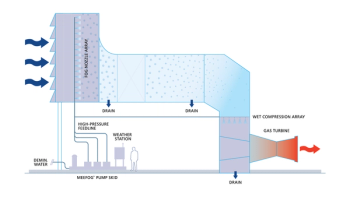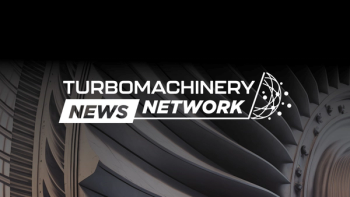
Turbo Expo 2025 Spotlights AI and Decarbonization
AI is revolutionizing design, manufacturing, and operations while simultaneously advancing decarbonization efforts and addressing workforce development challenges.
ASME’s Turbomachinery Technical Conference & Exposition 2025 (Turbo Expo), held June 16 – 20 at the Renasant Convention Center in Memphis, Tennessee, welcomed more than 2,100 attendees and featured 127 exhibiting companies. The theme for this year’s conference,"The Transformative Impact of Artificial Intelligence (AI)," focused on how AI is revolutionizing engineering fields, including predictive maintenance, design optimization, and advanced manufacturing.
“Experts from prominent companies around the world gathered to discuss the challenges facing turbomachinery with the advent of AI,” said Angelique Vesey, Senior Director, TEC Strategy & Operations at ASME. “Mark Spieler, the Senior Managing Director of Energy at NVIDIA, participated in these discussions, highlighting how NVIDIA is collaborating with various firms to tackle some of the industry's most difficult issues. We also hosted a plenary panel session featuring representatives from GE Aerospace, RTX, and Siemens Energy, where we engaged in a dialogue about the impact of AI on the turbomachinery industry.”
Discussions among turbomachinery and propulsion engineering experts from industry, academia, and government confirmed that decarbonization remains a key driver for technological progress, energy efficiency, and overall design strategies. Hydrogen capabilities continue to be explored and achieve new milestones, with several OEMs sharing recent turbomachinery advancements that support hydrogen at various percentage volumes.
“Turbo Expo has been covering the most cutting-edge technologies in the industry for almost 70 years,” Vesey said. “This year, some of the major trends we are observing include AI and a focus on sustainability, as well as workforce development. Turbo Expo provides a platform for people from various industries involved with turbomachinery to connect and engage directly with experts from around the world, all gathered in one place.”
AI + Turbomachinery
Several panel discussions centered on AI and digitalization and their impact on the industry. Many OEMs shared technological updates and insights into how AI is being incorporated into their processes and innovations. A few highlights include:
Plenary
Tuesday morning’s plenary session,
- AI optimizes design processes, improves manufacturing, enhances product performance, and drives innovation across the entire product lifecycle.
- Successfully implementing AI requires more than just technology—it demands building an AI-ready culture that encourages experimentation, reduces fear of change, and empowers engineers to leverage new tools creatively.
- The industry recognizes that AI advancement cannot happen in isolation. Companies are calling for increased data collaboration, shared learning, and community-wide approaches to solving complex challenges in turbomachinery and energy systems.
AI is not just a technological upgrade, but a fundamental reimagining of how the turbomachinery industry develops, manufactures, and operates its systems.
OEM Panel
Wednesday’s panel discussion,
ANSALDO ENERGIA
Ansaldo’s GT36 can burn 70% volume of hydrogen, which has been demonstrated in a rig under full conditions (pressure, temperature, etc.). Its other units can burn between 40 and 45% hydrogen.
SOLAR TURBINES
John Mason of Solar Turbines identified a few macro trends from the past 12 – 18 months as the share of intermittent renewables has begun to increase in the energy supply chain: grid stability/resiliency, decarbonization, and energy affordability and availability.
“We share common suppliers with our commercial aviation gas turbine companies, our military aviation, and the industrials, and this is creating challenges for availability as lead times become longer, and even affordability as prices are going up,” Mason said.
He pointed out that the challenge of grid resiliency is well understood. “You add to that the emergence of AI data centers and grid inability—that word was chosen correctly because, quite frankly, grids are not able to meet the rapid demand for power that data centers need, so this is creating a challenge commonly referred to as the Power Challenge,” he said. “Interestingly, data center growth is not paced by technology; it's paced by the availability of electricity.”
SIEMENS ENERGY
Dr. Ghenadie Bulat of Siemens Energy highlighted several important demonstrations, including:
- The world's first 10-MW carbon-free grid power from a 100% hydrogen gas turbine.
- A successful test of 100% methanol combustion with its partners at the Net Zero Technology Center in Aberdeen.
- Involvement in a feed study for a U.K. carbon-capture project that is expected to reduce nearly 1 million tons of CO2 annually.
Technical Session
On Wednesday, the technical session,
Werner Krebs, Ph.D., of Siemens Energy said that AI can navigate massive design spaces with hundreds of parameters, generating design proposals that meet specific engineering requirements like NOx emissions, pressure drop, and thermostatic stability. The approach allows for rapid exploration of design possibilities beyond traditional engineering methods.
He stressed that the success of generative AI depends on the quality of underlying computational tools and data, such as sophisticated GPU clusters and an understanding of physical principles, to generate meaningful design proposals. But most importantly, despite the advanced technological capabilities, AI is a tool to augment, not replace, human engineering expertise.
Robert Zacharias, Ph.D., of GE Aerospace Research, showcased a sophisticated approach to solving complex engineering challenges using AI and computational techniques. By creating a surrogate model, the team could explore hundreds of thousands of design combinations quickly, reducing computational time from days to milliseconds.
The next frontier of design optimization is inverse neural networks. Instead of traditional methods of exploring design spaces, the goal is to "flip the problem over", allowing engineers to input desired outputs and have the system generate potential design solutions, fundamentally transforming the design process.
Micro-Gas Turbines
ETN Global’s presentation,
Giuseppe Tilocca said micro-gas turbine technology suffers from competition from internal combustion engines, advancing fuel-cell technologies, and growing electrification trends. But, despite challenges, micro-gas turbines offer some unique benefits:
- Low maintenance requirements.
- Single exhaust stream that’s ideal for hybrid heat applications.
- Low NOx emissions (below 15 ppm).
- Excellent performance with renewable and difficult fuels.
"Micro-gas turbines are a niche product. If you try to market them as a mass product, you will not succeed,” Tilocca said.
Micro-gas turbines may have a low market assessment, but they show promise in renewable fuel and biogas, and decentralized power applications. Considerations such as equipment cost reductions, improved overall efficiency, scaled-up production, and targeted niche applications are critical. When exploring hydrogen applications, Tilocca said you have to balance efficiency and cost—equipment costs become increasingly important as hydrogen fuel prices decrease.
Antonio Escamilla Perejon highlighted the intricate trade-offs with micro-turbines: system size, performance, and cost that must be considered when designing and implementing them across diverse power output ranges.
Several advancements have been made through various micro-gas turbine research projects that are pushing the boundaries of sustainable energy technologies, including:
- Seamless solar power system integration.
- Innovative applications such as using micro-gas turbines as fuel-cell replacements for aircraft auxiliary power units.
- Harmonizing micro gas turbines with water treatment plants.
- Exploring sophisticated hybrid systems with fuel cells.
- Rigorously investigating sustainable biofuel applications.
Looking ahead, the development drivers are focused on increasing turbine temperature, leveraging advanced materials, achieving significant cost reductions, and exploring novel external fire and hybrid configurations to continuously improve efficiency and performance.
Women in Turbomachinery
A significant challenge for women in the turbomachinery sector is the scarcity of visible female role models.
“The biggest issue for women in turbomachinery is the lack of role models,” Scofield said. “We see fantastic women in the industry, but not enough of them exist. From an OEM perspective, statistics show that men and women join companies like Siemens Energy, GE, and Mitsubishi around the same age, typically around 21 to 23 years old. However, seven or eight years into their careers, when they're gaining enough experience to become first-time managers or team leads, they leave companies like ours. The question has always been why. One of the things we've uncovered at Siemens Energy is that there's simply not enough role models in our specific industry, and we need to continue fostering and promoting that.”
Scofield said events like Turbo Expo and its Celebrating Women in Turbomachinery dinner are crucial for addressing the underrepresentation of women in the industry by offering platforms for networking, shared experiences, and fostering a sense of community, thereby empowering women and creating vital support systems.
Check out additional conference coverage and exclusive video interviews on our
Newsletter
Power your knowledge with the latest in turbine technology, engineering advances, and energy solutions—subscribe to Turbomachinery International today.

